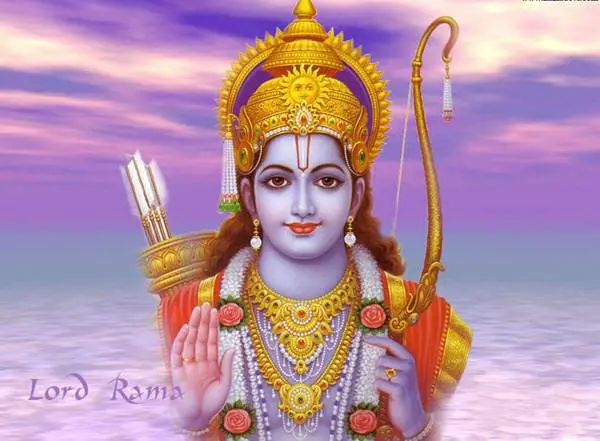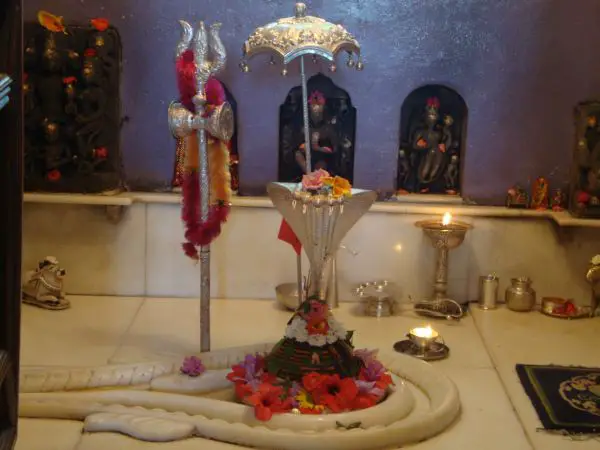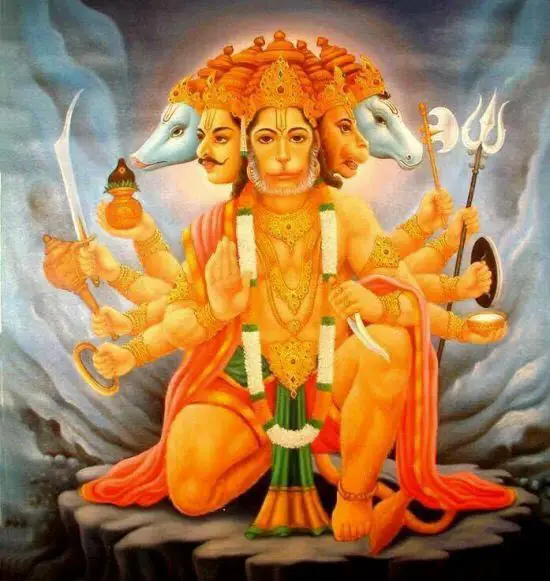Parvati or Gauri is one of the Supreme Hindu Goddesses and is known as Adi Parashakti. Along with Goddess Saraswati and Goddess Lakshmi, Goddess Parvati forms the trinity of Hindu Goddesses (Tridevi). The post shares with you Goddess Parvati Story.
Goddess Parvati has been described to have many attributes and aspects. She is the goddess of divine strength and power. She is also the Hindu Goddess of love, marriage, devotion, fertility, children, and beauty.
Goddess Parvati is the consort of Lord Shiva. She is the mother of Hindu deities such as Lord Ganesha and Lord Kartikeya. Parvati was born to the mountain king Himavan and queen Mena.
Along with Lord Shiva, Goddess Parvati is the central deity in the Shaiva sect of Hinduism. According to the Puranas, Goddess Parvati has been referred to as the sister of the preserver God Vishnu.
She is also recognized as one of the five equivalent deities which are worshiped in the Panchayatana Puja of the Smarta Tradition in the Hinduism.
Goddess Parvati is described to be the creative energy and power of Lord Shiva. She is extensively found in ancient Indian literature. Many Hindu temples dedicated to Goddess Parvati are found in South Asia as well as in Southeast Asia.
The name “Parvati” is derived from the Sanskrit word Parvata, which means “mountain.” Actually, Goddess Parvati was the daughter of King Himavan (also known as Himavat) who is regarded as the lord of the mountains. So, Parvati implies that “she is the daughter of the mountains.”
In fact, Goddess Parvati has been called by different names in the Hindu literature. Some of the other names associated with Goddess Parvati are Shailaja, Shailaputri, Haimavathi, Devi Maheshwari, and Girija.
Devi Parvati is even known as Narayani since she is the sister of Lord Narayana. Moreover, the Lalita Sahasranama has a list of 1000 names of Parvati (as Lalita).
She is also known as Ambika, Bhavani, Durga, Maheshwari, Shakti, Bhairavi, Mataji, Uma, and Aparna. Parvati is the Goddess of love and devotion and is known as Kamakshi. She is even the Goddess of food and nourishment and is known as Annapurna.
She is the golden one and is known as Gauri. She is the Goddess who destroys evil and is known as Kali. Parvati has been referred to as the embodiment of divine knowledge and even as the mother of the world who takes the form of Shakti or the essential power of the Supreme Brahman.
In fact, the legends, characteristics, and symbolism of Parvati evolved over time. In one aspect, she has been described as Uma, Haimavati, and Ambika, while her other aspect is more ferocious and destructive in the form of Kali, Gauri, and Nirriti.
The Hindu scriptures describe Parvati as the gentle aspect of Devi Shakti. Moreover, Parvati is represented as fair, benevolent, and beautiful. She is portrayed as wearing a red Sari. Parvati is depicted alongside Shiva. She is usually shown with two arms. However, sometimes, she is depicted as having four arms. She is sometimes shown as having golden or yellow colored skin.
She holds a trident, rosary, bell, goad, sugarcane stalk, or flowers. One of her arms is shown in Abhaya Mudra. Lord Ganesha sits on her knees, while Skanda (Kartikeya) stands or plays near her.
In the Hindu tradition, Parvati and Shiva are symbolized in the form of yoni and lingam respectively. In fact, the yoni-lingam metaphor represents origin or regenerative power.
The yoni-lingam icon is widespread in Shaivite Hindu temples. The yoni-lingam representation is called as Shivalinga. It shows the union of feminine and masculine energies that is responsible for recreation and regeneration of all life.
Sometimes Parvati is depicted in the angry and ferocious form of Shakti such as Kali. In this form, Parvati has eight or ten arms. She is depicted as wearing a garland of severed heads and a skirt of disembodied hands.
However, Parvati also has a benevolent manifestation in the form of Kamakshi or Meenakshi. In this form, a parrot sits near her right shoulder, which symbolizes cheerfulness, love, and fertility.
As per Hindu mythology, Parvati is the power of Lord Shiva. She has nurturing and benevolent aspects, as well as she possesses destructive and ferocious aspects. So, she adapts to circumstances in her role as the Universal Mother. In Mahakali form, she destroys evil, and in the Annapurna form, she feeds with food and abundance.
So, although Parvati was born as a human, she realized her true power and awakened the “Adishakti” form in herself, becoming a Goddess that is venerated by the Trimurti as well as the rest of the entire universe.
According to the Linga Purana, Parvati takes the form of Kali to destroy a demon named Daruk. In Skanda Purana, Parvati takes the form of a warrior Goddess and kills the buffalo-demon Durg. In this form, Parvati is known as Durga.
According to the Devi Bhagwata Purana, Goddess Parvati has many forms and names.
For example:
- As Durga, she killed the demon Durgamasur
- As Kali, she represents raw power and courage
- As Chandi, Parvati slew the demon Mahisasura
- As Das Mahavidyas, Parvati represents the ten aspects of Shakti
- The 52 Shakti Peethas represents the expansions of Goddess Parvati
- Navdurga are the nine forms of Goddess Parvati
- As Meenakshi, Parvati is the goddess that has eyes shaped like a fish
- As Kamakshi, she is the goddess of love and devotion
- Lalita who is the Goddess of the universe is a form of Devi Parvati
- As Annapurna, Parvati is the Goddess of food and abundance
- Moreover, there are many other forms of Goddess Parvati
Stories of Goddess Parvati
Here, you will get to know some of the most popular stories of Goddess Parvati.
Let’s get started.
Here we share with you the story of Sati who was reborn as Parvati:
According to the Puranas, Devi Sati was married to Lord Shiva against her father’s Daksha’s wishes. There was an immense conflict between Daksha and Lord Shiva.
Once, Daksha organized a Yagna (fire-sacrifice). However, Daksha did not invite Lord Shiva. Moreover, Daksha insulted Lord Shiva in front of Sati when she came on her own to attend the Yagna.
Sati was taken aback by this behavior of her father Daksha so much so that she immolated herself at the ceremony.
The death of Sati shocked Lord Shiva, and he was so grief-stricken that he retired from the worldly affairs and isolated himself in the mountains, austerity, and meditation.
Sati was later reborn as Parvati as the daughter of Himavat and Mainavati. She was named as Parvati (from the mountains) after her father Himavat who was the King of the Mountains known as King Parvat.
Parvati resolved to marry Lord Shiva. Her parents discouraged her, but she was not deterred and pursued to marry Lord Shiva.
Indra sends the God of desire and erotic love, God Kama, to awaken Lord Shiva from his state of meditation. The Kama shot an arrow of desire on Lord Shiva. However, Lord Shiva opened his third eye and burned the Kama to ashes.
Parvati did not lose her hope to win over Lord Shiva. She went to the Himalayas and performed immense tapas to draw the attention of Lord Shiva.
Lord Shiva meets Parvati is a disguise and tries to discourage her by telling his weaknesses and personality problems. However, Parvati paid no attention and insisted on her resolve.
Finally, Lord Shiva accepted Parvati, and they get married. After the marriage, Parvati and Lord Shiva moved to Mount Kailash. Lord Kartikeya (also known as Murugan or Skanda) and Ganesha are born to them.
Apart from this main story, there are other alternate versions (Hindu legends) about the birth of Parvati and her marriage to Lord Shiva.
For example: According to Shiva Purana, Mount Himalaya and his wife Mena appeased Goddess Adi Parashakti. She was pleased with them and was born as their daughter in the form of Parvati.
In the Shakta texts, Parvati even transcends Lord Shiva and is identified as the Supreme Being. She blesses devotees with marital felicity. She even symbolizes different virtues such as marital felicity, fertility, devotion to the spouse, and power.
Parvati is the household ideal and even the ascetic ideal. In the Hindu scriptures, Parvati is portrayed as the ideal householder who is keen on nurturing worldly life and society.
She is the harmonizing force between ascetics and a householder. Parvati even calms Lord Shiva during his Tandava dance. Moreover, Parvati is portrayed as the ideal wife, householder, and mother in the Hindu legends.
Parvati and Shiva are portrayed as the “ideal couple” and are represented as “Ardhanarisvara.” She even takes an interest in worldly affairs, beyond her husband and family.
In the Shiva Purana, there is a story related to Parvati that narrates the birth of Lord Ganesh. Once, Parvati was taking a bath. There were no attendants to guard her. So, she created an image of a boy with the turmeric paste and infused life into it. Thus Ganesha was born.
Parvati ordered Ganesha to be the guard and not to allow anybody to enter the house. Ganesha followed his mother’s orders and guarded the house.
After some time, Lord Shiva returned. He tried to enter the house but was stopped by Ganesh. There was a fierce battle between Lord Shiva and Ganesh. Finally, Lord Shiva severed Ganesha’s head with his trident.
When Parvati came out and saw the lifeless body of Ganesh, she was immensely angry with Lord Shiva. She ordered Lord Shiva to restore Ganesha’s life at once. Lord Shiva attached an elephant head to Ganesha’s body and gave rise to the elephant-headed deity that we know as Lord Ganesh. This story reveals Parvati’s motherhood and love for Ganesh.
Well, that’s all we have for you in this post on Goddess Parvati. We hope that you found the post useful. Thanks for visiting. We welcome your comments and suggestions.






